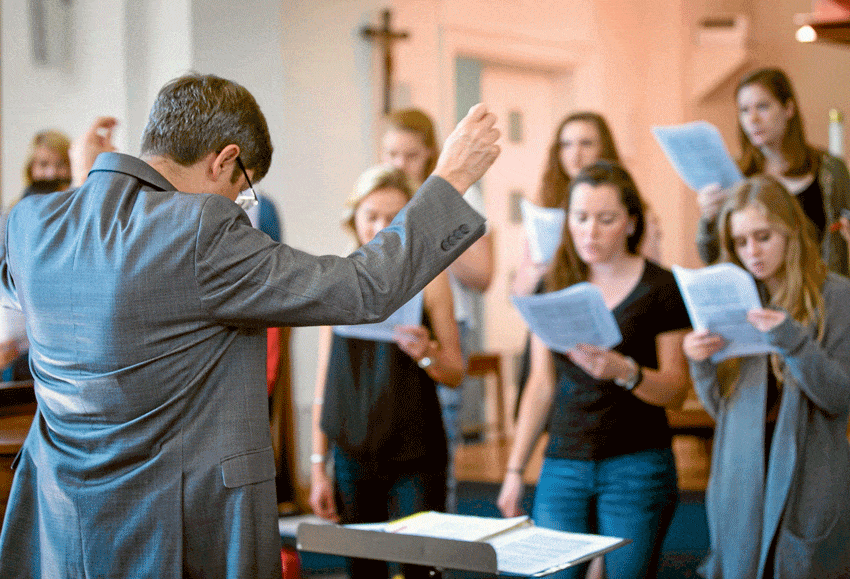
Some solutions to the liturgical music problem
So what can we do about bad hymns and music? The first is to remember that you don’t actually need to have hymns at Mass at all. And if your music ministry can’t deliver anything other than cocktail lounge vibes, then you probably shouldn’t have any.
One of my acid tests for whether music ministry is effective or not is whether the congregation is singing along vigorously with minimal help. Too often I’ve attended Mass with a very active music ministry and a largely silent congregation. Hymns are often unfamiliar, and also often pitched too high for most people to sing.
“[I’m sometimes in] the dark about what they’re actually singing. Is it the Responsorial Psalm? Is it the death scene from Tosca? Where am I?”
When I go to Mass and am sung at – rather than with – then I know the music ministry is no longer serving but is now performing. I recently experienced an awful mishmash when a music ministry took a familiar old hymn and syncopated it to a Cha-Cha rhythm.
This was led by a loud lead singer with a microphone who effectively rendered this well-loved classic unsingable by the congregation. He was having a great time singing it to us – but we sat there like stunned mullets, knowing we were beaten before we began.
This can also include gloriously operatic trained cantors whose pronunciation leaves me in the dark about what they’re actually singing. Is it the Responsorial Psalm? Is it the death scene from Tosca? Where am I? It’s very telling when polite people applaud the music ministry after Mass – that’s a sign that you are attending a performance rather than worshipping God.

One of the great liturgical recommendations of Vatican II was to retain the use of Latin and Gregorian plain chant. (Don’t believe me? Read some of the documents.)
Plain chant is generally easy to learn to sing, it’s pitched appropriately, and there’s no room for performances in it. You all know the ‘Our Father’ melody already; I’ve heard you swing into that with full confidence when you’re allowed to.
Don’t dismiss plain chant’s simple beauty
Plain chant is also largely unaccompanied, with no Cha-Cha or slide guitar needed. Then someone would need to explain to the music ministry that their regular Sunday gig has been cancelled.
The ensuing recriminations can be a sign that it’s become less about worshipping God and more about personal fulfillment. It’s hard – but it’s probably more important right now to be reorienting our parishes back to the worship of God and to liturgical order.
Plain chant is genuinely communal. You can feel the difference when the entire congregation chants the ‘Our Father’ using the traditional unaccompanied melody. There’s a sense of genuine unity and common worship that’s irreplaceable.
There are brave priests who have disbanded their parish music ministries and now simply choose familiar hymns and lead off with the opening line as they process in and out of the church, without any musical accompaniment. This is remarkably successful.
There’s a lot we can do about our poor church music – but it’s going to take courageous priests and supportive lay people to do it.
Dr Philippa Martyr is a Perth-based historian, lecturer and researcher. She can be contacted at: [email protected]
Related:
